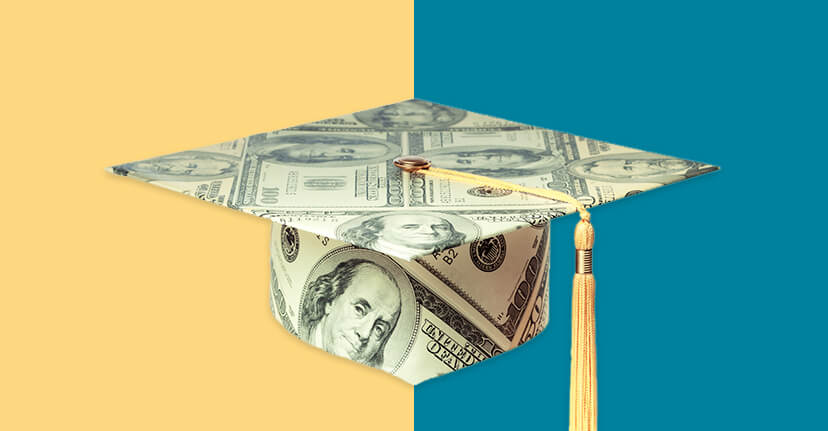Here’s Why a Student Loan Repayment Plan Matters
Student Debt Averages $36,900
Many college graduates are entering the workforce with student loan debt. For the class of 2021, it averages $36,900. Paying it off can mean shelling out $400 or more each month, depending on the interest rate and terms. Managing repayments at the same time new graduates are juggling rent and other expenses can be difficult. This is why it is a good idea for recent graduates to create a student debt repayment plan.
A repayment plan maps out how long a borrower will take to pay off the debt. It begins at different times depending on the type of student loan. For Direct Unsubsidized and Direct Subsidized loans, there is a six-month grace period, though there is a pandemic pause on repayments and interest for federal loans through Aug. 31, 2022. Private loans are different, so check with your loan provider to see what repayment plans are available, and if they offer a grace period or not.
Types of Repayment Plans
If you have federal student loans, the Standard Repayment Plan is essentially the default repayment plan. Payments are a fixed amount and made for up to 10 years at the interest rate you received when you first took out your loan(s). One of the benefits of the Standard Repayment plan is that it saves money in interest over the life of your loan because, generally, the loan is paid back in the shortest amount of time (10 years) compared to the other federal repayment plans (20 to 30 years).
If payments are too high to manage on the standard 10-year repayment plan, see if you are eligible for the Extended Repayment Plan for federal loans, where the term is up to 25 years and monthly payments are generally lower. This can help keep you out of default (which is important!). But it is important to remember that lengthening the loan term usually means significantly more interest will be paid over the life of the loan—because it will take longer to pay off the loan.
With the Graduated Repayment Plan, you would still pay your federal student loans back over a 10- to 30-year period, with lower payments at the beginning of the term that gradually increase every two years. The idea is that a borrower’s income will likely increase over time, but may not be much to start out (which makes sense, since you’re fresh out of school).
There are also Income-Driven Repayment Plans. To be eligible, borrowers need to go through a recertification process each year and, each year, your monthly payment could change (increase or decrease) based upon current income and family size.
Finding the Repayment Plan for You
Student loan debt is a fact of life for many college graduates but it does not have to hold them back. Creating a repayment plan can make the debt much more manageable. You can take this quiz to get a better understanding of each repayment plan option and see examples of scenarios that could be similar to yours.
Please understand that this information provided is general in nature and shouldn’t be construed as a recommendation or solicitation of any products offered by SoFi’s affiliates and subsidiaries. In addition, this information is by no means meant to provide investment or financial advice, nor is it intended to serve as the basis for any investment decision or recommendation to buy or sell any asset. Keep in mind that investing involves risk, and past performance of an asset never guarantees future results or returns. It’s important for investors to consider their specific financial needs, goals, and risk profile before making an investment decision.
The information and analysis provided through hyperlinks to third party websites, while believed to be accurate, cannot be guaranteed by SoFi. These links are provided for informational purposes and should not be viewed as an endorsement. No brands or products mentioned are affiliated with SoFi, nor do they endorse or sponsor this content.
Communication of SoFi Wealth LLC an SEC Registered Investment Advisor
SoFi isn’t recommending and is not affiliated with the brands or companies displayed. Brands displayed neither endorse or sponsor this article. Third party trademarks and service marks referenced are property of their respective owners.
SOSS21070601



